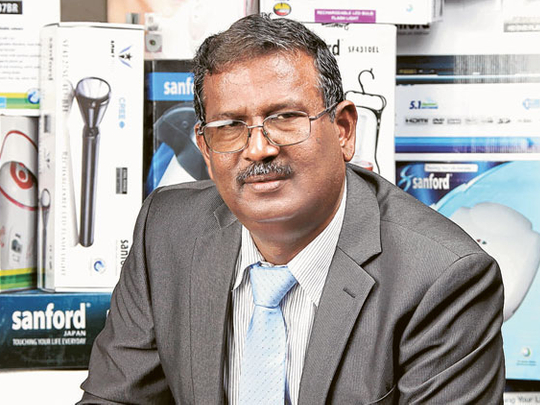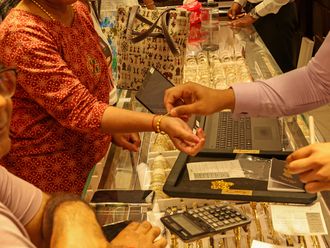
Dubai: To go head-to-head against the likes of Sony or Samsung is difficult in the best of times in an industry where consumer preferences can be notoriously fickle and profit margins wafer-thin. But to do so as a virtual start-up immediately raises the odds against the business ever making it.
But the people behind Sanford, a brand of Dubai origin, believe they have taken on the odds and overcome them. It certainly seems so with the parent company, ATMM Electronics, closing 2011 with revenues of Dh200 million. For an entity that came into being as recently as 2004 and on an investment of Dh5 million, the tally does represent a milestone.
Generic brands
"As long as China is there to provide the manufacturing and assembling base, a new entrant can come in and co-exist with the generic brands in the electronics and home appliance space," said Abdul Khader T.I., managing director. "As long as the newcomer ensures the products subscribe to certain quality benchmarks, the brand can always find enough shoppers to make it a profitable venture."
He has a point. At the time of Sanford's launch in 2004, its product range was dominated by DVD players and with good reason too. It was timed to extract maximum traction from consumers making a switch to the DVD format from VCD or even VHS. From that initial base, the brand expanded its line-up to include a gamut of electronics products and later, in 2008, made the move into white goods.
Part of a category known as ‘original equipment manufacturers', Sanford, which recorded a profit in its third full year of operations, is all set to commission its second manufacturing plant in China post January 15 (to coincide with the Chinese New Year.) These capacities would be used for lighting products, currently the best-selling category for the brand.
"In 2009 and based on what we had achieved by way of results until then, owning a manufacturing base in China was the logical next move," said Khader. "It created captive cap-acities for products that had the maximum demand and we had better control of logistics, which in this business is critical.
Second plant
"The investment in the second plant consolidates the gains we made with the first." Apart from its own plants, the brand continues to be assembled through third-party facilities in China, Taiwan, Hong Kong, India and even Japan.
Khader is quick to correct the impression that his products compete only on prices. "On the contrary, our pricing is only 5 to 10 off on the generic brands," he said. "If our intention was to compete only on pricing, it would have been an extremely shortsighted approach and would not have had long-term viability."
While launching the company and assembling its products proved easy, the last mile — to get the brand accepted at local consumer electronics stores — turned out to be relatively difficult. The promoters had to make the rounds at many retailers, based in clusters in and around Deira, to get over their initial reluctance.
"It was understandable since the brand was virtually unknown and we did not have a marketing budget to speak of then," said Khader. "The only way to convince was to get the retailers to test out the products. Fortunately for us, enough retailers were convinced with what we had."
Apart from adding to its manufacturing interests in China, Sanford is all set to commission assembling plants in southern India for its home appliances range. This way it circumvents the steep duty structures on imports of these products.
"As against around 30 per cent on the finished, duties on semi-knocked down kits would be 4 per cent," said Abdul Khader T.I. "The plants in Bengaluru and Chennai will cost Dh50 million to set up. But it would be worth it."












